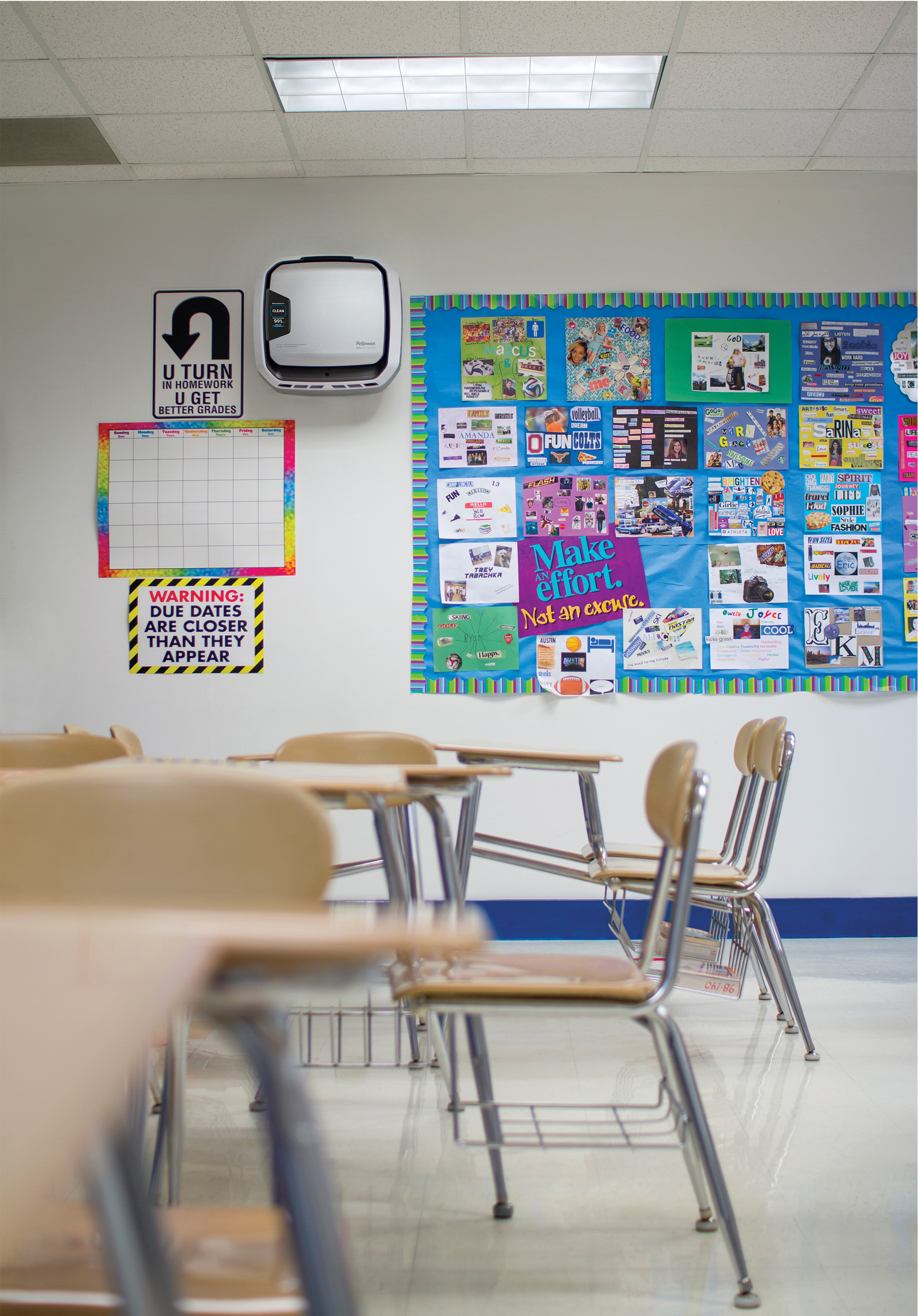
After two years of disrupted learning, Tim Browning, Head of Business Development - Air Treatment at Fellowes, discusses the role of air purification systems in reducing the transmission of harmful germs and viruses to safeguard student and staff health
AS we have come to understand more about Covid-19 (or SARS-CoV-2) over the past two years, respiratory droplets that carry the virus in the air pose one of the biggest risks of human contamination. For education environments where students spend all day indoors, and in some settings - in the same classroom, the risk of transmission is exacerbated.
When an individual infected with Covid exhales, talks, sneezes or coughs, particles that contain the virus are expelled into the air. Anyone within a “short range” (less than 1m away) of this is at risk of inhaling these harmful particles almost instantly. Any remaining particles then disperse and can be inhaled by those further away – and even those over 2m away can be exposed.
The installation of a high-quality air purification unit can help to remove airborne germs, and even COVID-19, as well as allergens such as dust and pollen, smoke, odours, and VOCs from enclosed spaces.
There are many air purification units available on the market, therefore it is important to choose a model you can rely on. There are several factors to consider when choosing an air purification system.
Firstly, the key to comprehensive air purification is an excellent filter. Models with a more sophisticated filter will work to remove even the smallest particles from the air. Leading models that feature True HEPA technology can capture hazardous contaminants as small as 0.1 microns, which are easily inhaled and can penetrate deep within the lungs. Furthermore, with energy usage a priority, look for models with technology that automatically adjusts power and fan speeds to the room conditions.
High quality purifiers clean the air in a room more frequently with a greater number of air circulation cycles. Look for models that are designed to deliver at least five air changes per hour. For additional peace of mind that the air purifiers selected will perform as intended, ensure they have been accredited by an independent third party. For example, the Fellowes AeraMax Pro AM3 and AM4 are certified to neutralise the airborne viral load of SARS-CoV-2 entirely and 99.99% of the aerosolised virus through a single pass of the purifier.

The benefits of an air purification system are not limited to minimising the transmission of germs and viruses. There is widespread evidence that unclean air has a negative impact on performance. It is known to increase cases of absenteeism as well as sick building syndrome which can cause headaches, dry skin, eye, and throat, and even tiredness and difficulty concentrating.
At Fellowes, we have been working with several UK schools to improve indoor air quality, including St Andrew’s Primary School in Greenock. The school was actively looking for a solution to clean the air in their school following the recommendations from a microbiologist who cited air purification to aid a child who was recovering from cancer treatment.
Headteacher Alan Connick said: “Knowing that the AeraMax Professional air purifiers are proven to remove over 99% of airborne contaminants, such as germs and viruses, gives us peace of mind that we’re taking the proactive steps needed to protect those in the classroom. We didn’t expect the machine to be so quiet, which is a bonus.”